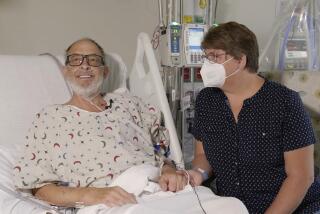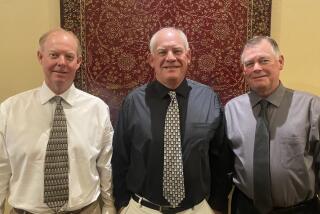Man Receives New Version of Artificial Heart
HERSHEY, Pa. — A man whose heart was expected to give out within hours became the first recipient Friday of the Penn State artificial heart, which doctors hope will keep him alive until a human donor is found.
The heart, which has a new design to reduce the risk of blood clots and is intended for use only as a bridge to a human transplant, was implanted in Anthony Mandia of Philadelphia during a five-hour operation at Hershey Medical Center, a spokesman said.
Mandia, 44, was sedated but conscious by Friday afternoon and apparently was not in pain, said Dr. John W. Burnside, Hershey’s associate vice president for health affairs.
He said Mandia was in critical but stable condition, and there was no sign of bleeding, which, along with clotting and infection, is one of the chief hazards following such surgery.
Able to See Visitors
Mandia was visited by his family Friday afternoon. He was breathing with the aid of a respirator.
Of Mandia’s prognosis, Burnside said: “I’d say it’s guarded . . . . This is still an experimental technique . . . we are in unfamiliar territory.”
Dr. William S. Pierce, who developed the heart, headed a team of 20 doctors and nurses in performing the 6 a.m. operation.
“It was quite clear early this morning that Mr. Mandia was dying,” Burnside had said earlier. “As of this point, we would state that it (the operation) is a success because Mr. Mandia is alive.”
Cardiologist Dwight Davis had concluded that Mandia would not have survived another day without a transplant, but no donor heart was available, Burnside told reporters in nearby Harrisburg.
Mandia, who is single, works for the Philadelphia Recreation Department. He was transferred to the medical center Monday from Nazareth Hospital in Philadelphia.
More to Read
Sign up for Essential California
The most important California stories and recommendations in your inbox every morning.
You may occasionally receive promotional content from the Los Angeles Times.










